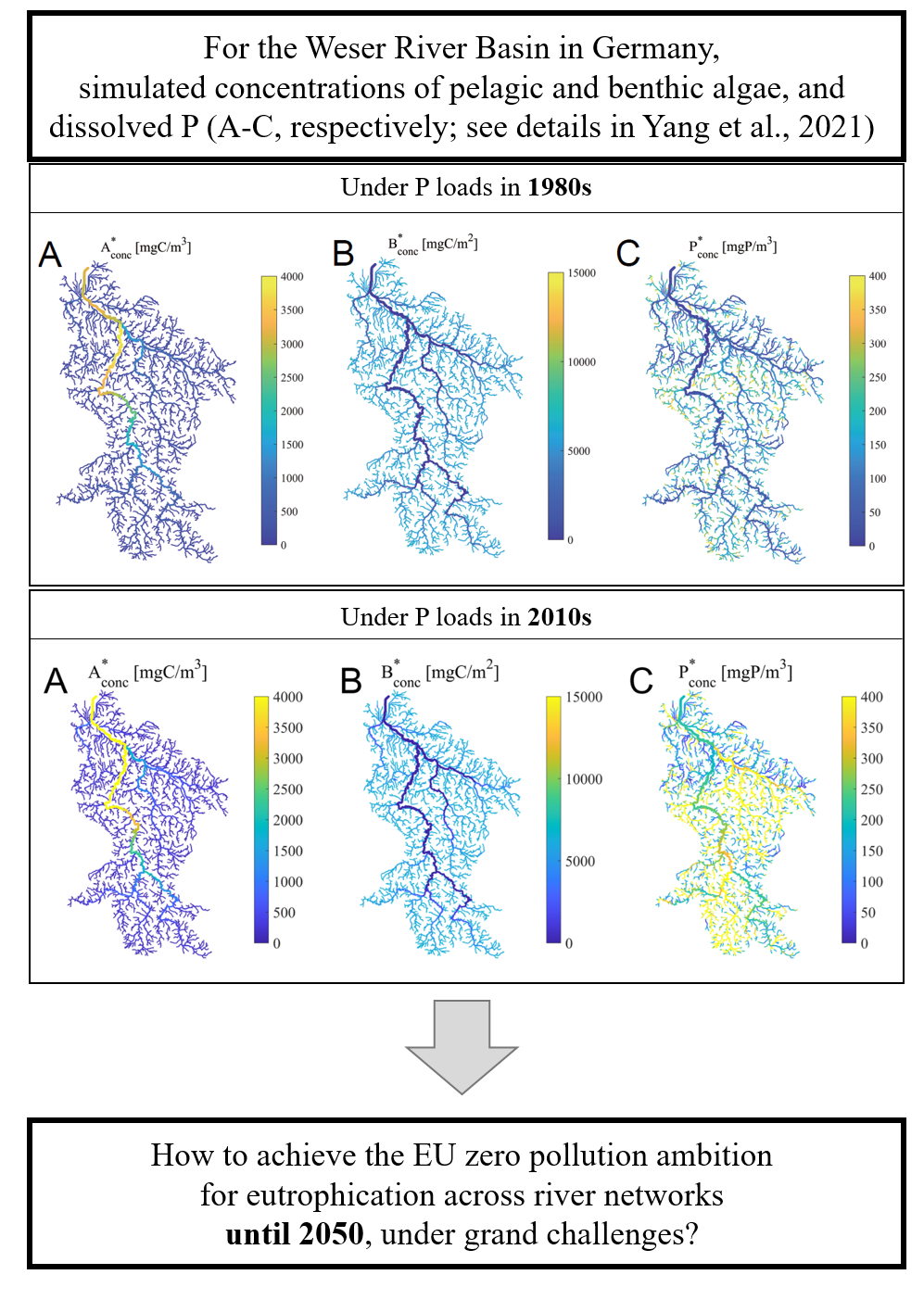The zero pollution ambition for river eutrophication
Background
According to the EU zero pollution vision for 2050, achieving good-ecological-status in rivers under the EU Water Framework Directive is expected to bring the EU a big step closer to the zero pollution ambition for water quality and ecosystem health. Nonetheless, recent evaluations of the European Commission in 2020 concluded unpromising circumstances in the future if the EU-scale freshwater legislations will be implemented as they’ve been done so far. Furthermore, projected grand challenges such as climate, land use, and population changes as well as rapid urbanization play crucial roles in exploring future pathways to reach the zero pollution vision for river water quality and ecosystem at the scale of a river basin. In these contexts, scientific research is required for assessing expected status on river water quality and aquatic ecosystem integrity at basin-scale under reliable future projection scenarios on anthropogenic and hydro-climatic forcings.
Scope & Objective
In this synthesis work, we focus on one type of pollutant and an indicator for representing river water quality and ecosystem health, which are total phosphorus (P) and eutrophication likelihood, respectively. We aim to address how each factor in the PLAN-B framework of TRACER will contribute to future river eutrophication and to provide a compass for achieving the zero pollution vision in terms of pelagic and benthic eutrophication across river networks under the grand challenges. Selecting a representative river basin for individual climate zones in Europe, we perform hypothetical thinking to set up archetypal scenarios that enable us to meet the zero pollution goal.
Guiding Questions
· How much nutrient loads from households should be reduced until 2050 by keeping the treatment efficiency of WWTPs as present?
· How much treatment technology of WWTPs need to be improved until 2050 if people produce the same amount of daily nutrient?

